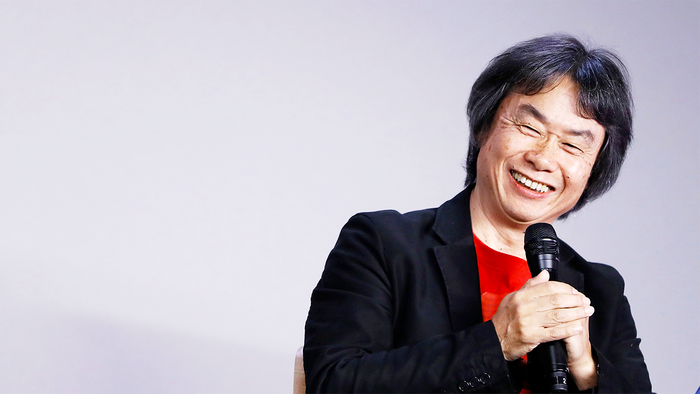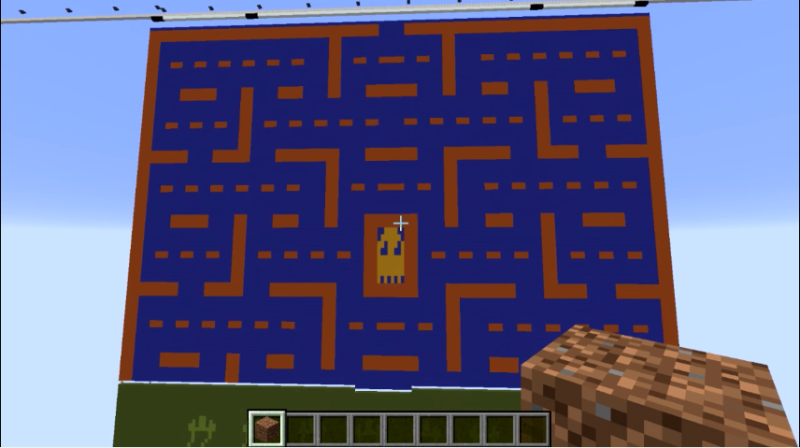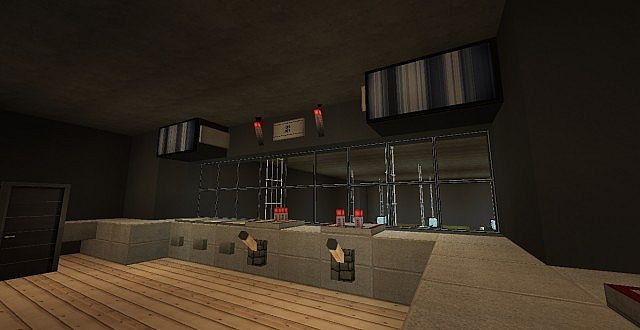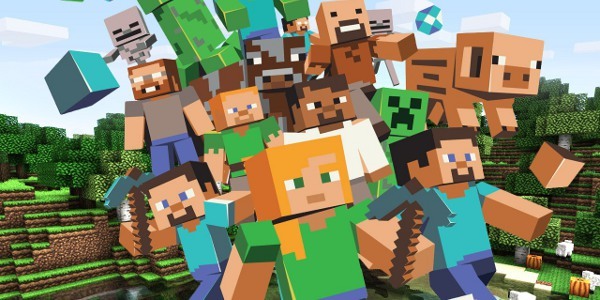
by Stone Marshall | Dec 13, 2016 | Minecraft News, Minecraft questions |
Shigeru Miyamoto – the man responsible for creating Mario back in 1981– has been in the United States promoting the December 15th release of Super Mario Run for iPhone and iPad, keeping a brutal schedule that has included playing guitar with the Roots on The Tonight Show and speaking to a packed crowd at the SoHo Apple Store in New York. His new game marks a massive change of approach for the pioneering company he’s worked at for more than 30 years, as it sees its crown jewel property appearing on devices not made by Nintendo.
We caught up with Miyamoto at the end of his big publicity tour and spoke to him about his creative process, his feelings about getting older, whether he’s thinking of retiring any time soon and how he sees himself as a creator. He also reveals that he’s been able to find the time to work on ideas for Nintendo’s theme park partnership with Universal by not leading the charge on the company’s upcoming Switch console.
You mentioned in your presentation at the Apple Store this week that your core team has been together for 30 years. How do you keep that relationship together and keep it working?
It’s interesting, because people often ask me what I’m most proud of and for the longest time it was a question I always really struggled with. A few years ago, I realized that the thing that I’m really the most proud of is that I’ve been working with the same core group of people for the last 30 years – and really it’s because you just don’t see that happen very often.
There’s myself, Takeshi Tezuka, Toshihiko Nakago and there’s actually a fourth member of our group too: Koji Kondo. Usually it’s the four of us that work on things together. There are probably a few reasons for it. I think we’re actually somewhat special because we’re all Nintendo employees, and that’s unique compared to what you’ll sometimes see with other creative groups. The other is that in working together over the past 30 years, we’ve all fallen into these very specific roles in the development process and that’s enabled us to work really well.
What are those roles?
Well, I’m the boss. Because I’m the oldest.
What’s key is that all that we do is work very closely together to make sure the thing we’re doing is really fun. That’s what we’re always striving for. One of the things we’ve done to maintain the relationship is that we spend a lot of time together. Japan is a country where people really work a lot, so every day we always eat lunch together and go to dinner together.
When there’s an idea for a game or something that we think is just going to be fun, generally the four of us share a similar opinion. We all kind of agree on the fundamentals. The other thing I’ve noticed is that although we have this strange convergence of opinions, when other people come into the group and see what we’re getting all excited about, people will often question us and say “oh, does that really seem that fun?”
We just really trust each other, and that came into play with Super Mario Run because it was easy for us to drill down and know what we should and shouldn’t do on mobile. We aligned very quickly.
So what did that look like?
This time from the very beginning we decided that we wanted to make the very simplest Mario game that we possibly could. When we first made Super Mario Bros. 30 years ago, obviously a lot of people played it and part of the reason they liked it was that all you did was move to the right and jump. It was pretty simple. Gradually Mario games have become more complex and it’s harder for people to control now. This time we started off with the idea of: “What if we made a Mario game where all you do is jump and everything else is handled automatically?” Then we had to think about how we could take that basic structure and make it fun.
Shigeru Miyamoto on Mario, ‘Minecraft’ and Working With Apple

by Stone Marshall | Dec 12, 2016 | Minecraft News, Minecraft questions |
SethBling is a master at making games do amazing things. He’s managed to inject the code for Flappy Bird into Super Mario World and created a bot that learned how to play Mario. Now, he’s built a working Atari 2600 emulator in Minecraft. And he’s done it all without any mods.
The emulator runs Atari 2600 games like Donkey Kong and Space Invaders using a complex system of over 2,000 command blocks that plays actual Atari ROMs. They’re a little slow. The 2600 managed 60 frames per second. Seth’s emulator can do 60 frames every four hours. By the end of 18 hours, the first barrel in Donkey Kong has just reached the middle of the second platform.
Seth explains the process in a second, more technical video. He builds cartridges using basic materials like stone and dirt, each block standing in for a certain binary value. He can use those blocks to assemble the code for games.
After that? It’s the long process of using the allocated memory to draw the sprites. The data is occasionally drawn into the wrong spot on the screen but given the fact that this is an emulator that used Minecraft blocks that’s only a small setback.
Seth has shared the world file for people who want to check it out for themselves, as well as an editor to help folks load in their own ROMs. So, if you happen that have Atari ROMs laying about and are sick of seeing them run at normal speed, boot them up in Minecraft and sit down for the longer game of Pac-Man you’ll ever play.
YouTuber Builds Working Atari Emulator In Minecraft

by Stone Marshall | Dec 11, 2016 | Minecraft News, Minecraft questions |
With 30 million trials of last year’s ‘Hour of Code’ tutorial, Microsoft and Code.org believe their new Minecraft offering will again introduce tens of millions to coding for the first time.
It is coming on the heels of Microsoft’s coding workshops worldwide during Computer Science Education Week.
The Minecraft Hour of Code Designer is a coding tutorial for students and educators created for Hour of Code, an annual, global campaign held during Computer Science Education Week, Dec. 5–11.
The new web-based tutorial enables beginner coders to create and share their own simple “Minecraft” game, and is designed to empower anyone to begin learning the problem-solving and critical thinking skills required in today’s tech-fueled world.
Created by “Minecraft” game designers at Mojang and Microsoft, in partnership with Code.org, the fun and easy-to-learn one-hour experience builds on the success of last year’s record-breaking “Minecraft” tutorial, which reached more than 30 million students worldwide.
With the goal of inspiring millions more to try coding for the first time — and to keep going on their journey of learning computer science — as of today, the tutorial is available in 10 languages, including Spanish. It is scheduled to be available in 50 languages by Dec. 5.
With the immense popularity of “Minecraft” around the world, Microsoft and Code.org believe the tutorial has the potential to reach people of all ages and likeness.
Women and girls already compose nearly half of the game’s global fan base. The tutorial also underscores Microsoft’s commitment to ensuring all young people have the opportunity to learn computer science, an economic and social imperative in this era of digital transformation which Microsoft aims to reach students most likely to be among those without access, particularly girls and minorities.
“We are partnering with Code.org again this year to make computer science more accessible to millions of youth around the world with ‘Minecraft’ and Hour of Code,” said Satya Nadella, CEO, Microsoft.
“I am inspired by the ‘Minecraft’ generation who view themselves not as players of a game, but as creators of the new worlds they dream up. This is the generation that will imagine, build and create our future, and together we can equip them with the computational thinking and problem-solving skills to seize the opportunities ahead.”
Adding his comments, Hakeem Adeniji-Adele, public sector director at Microsoft Nigeria, Microsoft and Code.org are working globally with schools, educators and governments to deliver the benefits of computer science education in schools, after school and at home to give all youth the opportunity to learn the skills they need to achieve more.
Designed for ages 6 and up, the Minecraft Hour of Code Designer teaches students to create their own “Minecraft” experience where they can program the rules.
“They can make chickens that drop gold, or zombies that run away instead of attacking. Along the way, students use Code.org’s familiar drag-and-drop coding interface to learn computer science concepts such as object-oriented programming, event handlers and repeat loops. Players face a series of 12 challenges, culminating in creating their own simple game, which they can share with friends,” said Adeniji-Adele.
Also sharing her thoughts around the importance of Computer Science in their classrooms, Mrs. Abbas Omobolanle of Ikota Computer Centre (located in Obalende Primary School), as a class teacher, the importance of Computer Science is to enable our pupils fit in the society.
In her words, “We need to catch them young to reason and think faster. To enable our pupils to know the happenings in our environment and the world at large.”
“Code.org was founded with the vision that every student in every school should have the opportunity to learn computer science — not only because it’s foundational for any career, but because students love it,” said Hadi Partovi, co-founder and CEO, Code.org. “‘Minecraft’ is a special game that appeals to a diverse global community. We’re delighted to have the chance to teach students coding with the fun familiarity of ‘Minecraft,’ to engage students of all backgrounds and skill levels.”
In support of Code.org and the global Hour of Code campaign, Microsoft will also lead thousands of youth coding events in more than 60 countries.
Microsoft, code.org target beginner coders with minecraft programme

by Stone Marshall | Dec 11, 2016 | Minecraft News, Minecraft questions |
Ex-Microsoft engineer SethBling has created an Atari 2600 emulator using nothing but Minecraft.
Redstone wizard SethBling has created an Atari 2600 emulator in vanilla Minecraft, recreating game cartridges and Atari hardware using dirt blocks.
While the emulator is impossibly slow, SethBling’s video details how the 1977 game console can be faithfully recreated by using Minecraft’s features and some scripting wizardry.
SethBling’s emulator uses a Minecraft armor stand to draw colored blocks to represent the game’s 8-bit visuals. It draws information from 128 bytes of “RAM” crafted from a huge slab of dirt and stone, designed to represent the binary code. Dirt represents zeros, while cobblestone represents ones. The video provides a very visual explanation of how information is handled by computational hardware to create animation frames.
SethBling also provided tools to allow people to try the emulator for themselves in the description of the above video, which even includes a tool to convert 4 KB Atari 2600 ROMs into block cartridges for the emulator’s Minecraft world state.
Microsoft is already offering Minecraft to schools to teach all sorts of subjects from maths to computer science. SethBling’s video exemplifies the game’s versatility in this area, particularly when it comes to engaging younger audiences with technical topics. I think I’ll stick to blowing up Zac Bowden with creepers, though.
A redstone master has constructed a functional Atari 2600 emulator in Minecraft

by Stone Marshall | Dec 10, 2016 | Minecraft News, Minecraft questions |
YouTube personality SethBling has emulated the Atari 2600 inside Minecraft. It’s a clever use of the game’s command blocks, which act as the brains of the operation.
But don’t get too excited.
While SethBling has provided a tool to load Atari ROMs into Minecraft, once they’re in there you’re only going to be playing at around 60 frames per… four hours.
Instead, think of his project as a tremendous way to explain how games are made.
SethBling has assembled an array of more than 2,000 command blocks in his design. The way he has them configured, they read stone and dirt as either ones or zeros. When an Atari game is pushed into Minecraft it resolves itself as a 4 kilo-block chunk of land, a three-dimensional representations of raw game code.
It proves to be a remarkable visual representation of the ephemeral nature of programming. You can watch SethBling sculpt the blast shields from Space Invaders on the cart itself before they’re sent to the 2600’s “screen” by manually editing them with his in-game hand.
It’s easy to see how a teacher could use SethBling’s tools, capitalizing on the familiar landscape of Minecraft to teach kids programming. A much more technical explanation is available, and you can even download the world for yourself and mess around with it.
For more mind-bending Minecraft builds check out our guided tours of The Legend of Zelda and Pac-Man.
You can play Atari games inside Minecraft

by Stone Marshall | Dec 10, 2016 | Awesome Book News, Minecraft News |
The studio responsible for ongoing development of Minecraft is dipping its toes into the games journalism business, Mojang announced this week, re-launching Minecraft.net as a community hub dedicated to all things Minecraft -related. It’s not going to feature the world’s most objective coverage of the popular sandbox game but the new Minecraft site does show some promise.
It’s not clear what led Mojang to make the change, though the recent spate of publisher-owned blogs makes the news significantly less surprising. What is clear is that Microsoft and Mojang are doing what they can centralize discovery and distribution of new Minecraft content, regardless of whether it was created in-house or by a member of the Minecraft community. The new site will include snapshot announcements, patch notes and other developmental news. Mojang says it also plans to use the site to “[dig] into development secrets, inspiration behind our updates, DLC, game mechanics, and more.”
The studio also plans to use Minecraft.net to highlight community creations, including popular YouTube videos, Minecraft mods, new servers and even those who prefer channeling their love of Minecraft into physical art, like cosplay. Of course, seeing as it’s a company-run platform, we’ll also see plenty of Minecraft merch sprinkled into the mix. The studio even brought in Marsh Davies, known for his work at PC Gamer and Rock Paper Shotgun, to run the revamped site. Minecraft fans can currently read up on the inspirations behind the recently added underwater temple and one of the game’s most-popular world-generation tools.
Minecraft is currently available on PlayStation 3, PS4, PS Vita, Xbox 360, Xbox One, Wii U, iOS, Android and PC.
Be sure to check back with iDigitalTimes.com and follow Scott on Twitter for more Minecraft news throughout what’s left of 2016 and however long Mojang supports Minecraft in the years ahead.
‘Minecraft’: Mojang Launches Community Hub Featuring News And Fan Content





